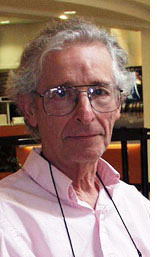One Nation Under Gods: A New American History, by Peter Manseau. Little, Brown and Company. 2015, 469pp
By David Strom

SAN DIEGO — At the founding of our nation over 20 percent of African slaves were Moslem. Their number dwarfed the number of Catholics or Jews living in the colonies. The third president of the United States, Thomas Jefferson, was not a Christian but a Deist. Haym Solomon, a Jew was a major monetary supporter of the American Revolution. Peter Manseau’s history of One Nation Under Gods details the religious diversity of our nation’s history from the time of Columbus until our present day. Some of this history is hidden, some obvious, and some syncretized as to be almost a new religious offshoot itself.
Each chapter of the book introduces the reader to a religious person who is venerated or an outcast, a blasphemer, heretic, atheist, or heathen. It is through these people that we learn of their influence about the society and times in which they lived.
Cotton Mather, a Protestant minister in the early eighteenth century, witnessed the devastation wrought by fire in Boston. A disease that stressed him the most was smallpox and its cyclical reappearance. To Mather and other clergy like him it was clear—it was divine wrath because they had strayed from religious faith. Mather hadn’t strayed and yet his wife Abigail died of smallpox in 1702.
In December of 1706 “Some gentlemen of our Church… purchased for me a very likely Slave. Mather called him Onesimus. Mather believed in baptizing and whether or not Onesimus became a Christian is not known. By 1713 Cotton Mather’s second wife and twins died of disease. Mather asked his Onesimus if he had ever seen the disease smallpox?
“Yes and no,” he replied.
Mather was confused by the answer. Onesimus went on to elaborate that “there was a practice in the place of his birth by which healthy young people were exposed to fluids from the bodies of the ill in order to protect them from the disease. So treated they became sick for a time themselves, but with a far lower rate of full blown affliction.”
This was an early form of inoculation for smallpox. Researching this further, Cotton Mather learned that it was not unknown in many counties including the heathen world. Mather began questioning his thoughts about the destruction by smallpox as being retribution by an angry God. Epidemics were acts of God. Cotton wrote an article in an English medical journal about what he learned but did not tell his fellow clergy about the idea of inoculation. That came later.
Mather learned a great deal from Onesimus, integrated some of his medical knowledge, and tried to convert him to Christianity. He failed. But like so many other encounters with other religions, each learned from one another. And our nation became culturally and spiritually richer for it.
Sikhs, Hindus, Buddhists, Moslems, Mormons, Taoists, Confucianists, Shintoists, Native American religions and so many others have influenced each other, changed each other, created and spawned offshoots that exist in our society today.
We are witnessing a growing challenge to established religion. The recent Pew survey on religion in the United States showed a drop in about six percent of those affiliated with established religions and a growth of about the same percentage in unaffiliated.
We have all seen in the Jewish community a growth syncretism. It is becoming less uncommon to see Chanukah “bushes” in Jewish homes along with Chanukiahs. We witness something like the reverse syncretism when Christians hold their own type of Passover seder. We are today a schmorgasborg of religious belief and non belief. According to Peter Manseau, “the true gospel of the American experience is not religious agreement but dissent.”
Governor John Winthrop of Massachusetts Bay Colony said: “For we must consider that we shall be as a city upon a hill, the eyes of all people are upon us….” Ever since that time in the early 1600’s our nation has been trying to build that utopian city where religious tolerance is practiced by all non-religious and religious human beings. We are still in the process of building that city on the hill in this world of ours. To paraphrase Thomas Jefferson, those who believe in one God, those who believe in twenty gods, and those that believe in no God, are bound together by something more significant than their own individual beliefs.
*
Strom is professor emeritus of education at San Diego State University. He may be contacted via david.strom@sdjewishworld.com. Any comments in the space below should include the writer’s full name and city and state of residence, or city and country for non-U.S. residents.